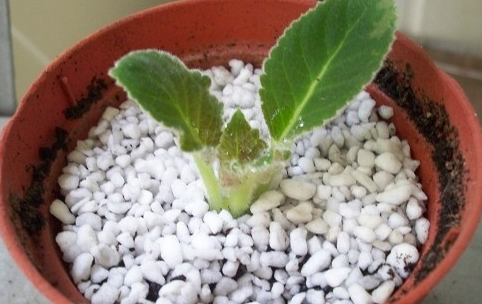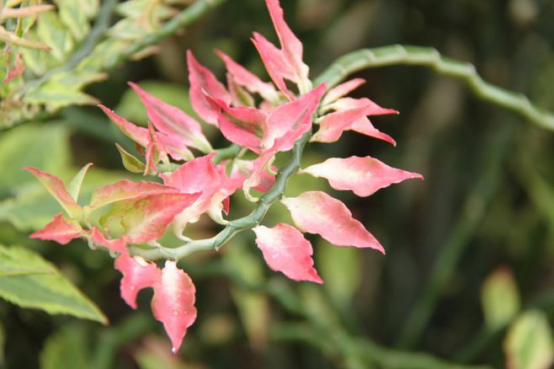Culture methods of paulownia paniculata
1. Soil
The cultivation of paulownia had better choose loose, fertile and humus-rich soil, which can be slightly acidic.

two。 Temperature
Paulownia prefers warmth, and the optimum temperature for growth is 10-25 ℃, and the optimum temperature for growth will be different in different seasons. The best temperature is 25 ℃ from January to October, and 12 ℃ from October to January of the following year.
3. Light
Big rock tree likes the sun, but also likes the semi-overcast environment, it is best to accept astigmatism, usually to appropriate shade, big rock tung flowers will be more gorgeous.
4. Moisture content
Paulownia needs appropriate watering, once too much water is easy to cause tuber rot, summer high temperature can appropriately increase watering, often spray water fog.
Culture methods of paulownia paniculata
The breeding method of paulownia in this paper includes practical breeding experience such as sowing, cutting propagation and flowering skills, which is of great reference value for novice flower friends. the reason why it includes sowing is because many flower friends choose to plant paulownia from sowing.
First, big paulownia sowing
1. Sowing: pure peat, peat perlite or three-in-one peat is fine, but the type of peat soil should be fine, and the matrix should be moist before growing true leaves. Wet the soil fully, and then sow the seeds as big as dust evenly, there is no need to cover the soil! One centimeter under the plant can be soaked in the bottom plate and sucked on the water to make the culture medium moist until four true leaves grow. Cover with a transparent lid and wait for it to germinate where the scattered light is sufficient.
2. Transplanting seedlings: generally, paulownia seedlings have to be moved twice before they grow faster. At present, I don't understand why. Four true leaves move once, and then a single piece is only longer than 10CM. It is better to move seedlings again, so it grows very fast.
3. Planting: when planting, the base fertilizer can be properly applied to help the flowering period to be full.
Second, leaf bud insertion propagation
Leaf cuttings
The main results are as follows: 1. Strong leaves are better as reproductive leaves, too old, poor vitality, too tender and immature, petiole 2-3CM, the method is similar to that of Corydalis, the leaves are lightly compacted, and the larger leaves can be divided into two.
2. After the leaves are inserted and properly moisturized, they will sprout in about one and a half months. If the leaves are not rotten and do not germinate for more than two months, the leaves can be knocked off, leaving only a short petiole on the soil surface to control water and let the soil dry slightly, which may speed up the germination.
3. The seedlings can be transferred and planted after sprouting to four true leaves, and the seedlings can be cultured in a place with sufficient light after slowing down the seedlings.
Bud insertion
The excess lateral buds or apical buds of paulownia can be used as propagators, so the growth rate and survival rate is better than that of leaves, and the top bud should be knocked off to reduce nutrient consumption when inserting buds. Don't rush to look at the flowers, the flowers will definitely come, and more full and gorgeous.
3. Bulb culture
1. The beheading of paulownia is just the opposite of pansy, leaving it behind. It is best to find a sunny day after the flowers have completely bloomed, leaving the stalk 1-2 cm. 3 or 5 days after beheading, there is no need to water the ball, so as to avoid wound infection leading to rotten ball. It will sprout again within 10 days after beheading. When sprouting to four true leaves, you can change the soil and transplant or the original pot to continue planting. Try not to change the pot and change the soil as soon as possible, so it is easy to rot the ball.
2. After beheading, the bulbs usually sprout together. If it is not for reproduction, only one of the buds can be left, and the weak buds can be removed. This is conducive to the concentration of nutrients and the blooming of more and more flowers.
Fourth, the flowering skills of paulownia.
1, the light should be sufficient, the demand for light is more than the pansy, the direct sunlight before 10 o'clock in the morning is fine, the seedlings are weak and blossom is small.
2. leave only one bud and don't hit the top, so that the bud can blossom more and have high quality.
3. Try not to water the flowers during flowering, so that the flowering time will be prolonged, especially for single-petal varieties.
4. Once the single-petal variety is pollinated, the flowers will fall quickly. You should know that all plant blossoms consume a lot of energy. Flowering is not to show us beauty, but to reproduce.
5. Because most of the trees are light, it is best to help them in blooming season and support them with things, or the flowers will not be lifted upright.
5. Insect pests
The main results are as follows: 1. Root powder is a good companion of rock tree. Dry soil is easy to provoke root powder to visit. Although rock tree can be dry, it is best not to be too dry before watering. Root powder can be treated with heavy medicine and phosphorus quickly, but it has a strong taste and should be used with caution.
2. Mites are also common and can be killed with imidacloprid.
VI. Resistance
Dayantong resistance is general, especially like the clean environment, many students' feeling is: Dayantong said goodbye, there is no psychological preparation. The resistance of mini paulownia is better than that of big rock, and the sleeve is also more resistant than big rock. once bacteria are found in big rock, the slightly soft and unblackened leaves should be laid down as soon as possible, and the petiole should be soaked in water and then inserted into the leaves. 7. About the pattern and color
Many students are more entangled in design and color, whether it is pansy or big rock or other bitter class. After raising bitter for so many years, we have found that the flowers of the bitter family have something in common. The flowers are basically trumpet-shaped, opening on the side, facing the sky, and hanging down. The color is not stable, the so-called stability is also relatively stable in a specific environment, of course, there are times when there is no edge, maybe it can be regarded as a kind of variation! In the legendary rainbow series, the instability of flowers and colors is particularly obvious. Very often, the flowers and colors of the same big rock in different order are different, even if the early and late flowering stages of the same flower are different, so don't worry too much about colors. Seedling shape, the time is right, I think the flowers are genuine flowers, at least in that period is authentic.
8. Bulbs
The main results are as follows: 1. relatively speaking, the double ball is smaller, the opening point is larger, the lateral flower is larger, and the lateral floret is the largest.
2. It is recommended that the big ball should be exposed to the soil surface, which is not easy to rot, and it is said that the ball will age after more than three years, so you can consider re-cutting it into small pieces at the bud point to dry and then double the new species.
Culture methods of paulownia paniculata
If we want to make paulownia blossom more, we should first choose those imported hybrid varieties with various flowering, short and strong plant types, strong disease resistance, rapid growth and easy management as mother plants, and single-petal varieties have more flowering than double-petal varieties. The method of sowing is generally used to raise seedlings. After emergence, it is necessary to strengthen daily management in time, and pay attention to the seedlings with three cotyledons at the same time, such seedlings tend to bloom more, and are hereditary, and can be used through asexual reproduction.
The suitable growth temperature of Caulownia paniculata is 10-25 ℃. There are different requirements in different seasons, 18: 25 ℃ from January to October, and 10: 12 ℃ from October to January. The suitable temperature can make the leaves grow luxuriantly and green, and the flowers are large and bright. When the plant is withered and dormant, take out the bulb and hide it in the slightly moist sand.
Paulownia is a semi-positive plant, usually should be properly shaded to avoid strong light. There should be plenty of sunshine in the seedling stage in winter to promote the robust growth of seedlings. Summer must be carefully maintained in a ventilated shade with scattered light. During the growth period, the light should not be too strong, otherwise it will inhibit growth. It is appropriate to extend the sunshade time when flowering, which is beneficial to prolong the flowering period.
Large paulownia flowers and leaves are fluffy, and once they are stained with water droplets, they are very perishable, so do not spray water on the flowers and leaves. It is best to use the immersion method to water. Usually appropriate amount of watering, too much is easy to cause tuber rot, leaves withered and yellow, or even the whole plant death. In the period of high temperature in summer, it is watered once or twice a day. When the air is dry, you should often spray water around the plant to increase the humidity of the environment. Watering should be uniform, not too dry and wet, suddenly hot and cold. Rain must be avoided during flowering. The potted soil is drier in winter.
- Prev

Propagation methods of paulownia paniculata
1. Sowing, reproducing and sowing the seeds need to soak the seeds for one day to promote germination, then sprinkle the seeds evenly on the potted soil, wet the flowerpot with water, cover the glass, and put it in an environment of 18-20 ℃. After about 10 days, it can germinate. two。 Bulbs need to grow for two or three years.
- Next

Culture method of cardinal coral
Cardinals are not very demanding for light and do not need to pay special attention. And its leaves are reddish in strong light and green in half-shade, all very good-looking. But remember not to let cardinals shine in the summer, and don't put them in too dark places indoors. Temperature cardinals like to be warm
Related
- Fuxing push coffee new agricultural production and marketing class: lack of small-scale processing plants
- Jujube rice field leisure farm deep ploughing Yilan for five years to create a space for organic food and play
- Nongyu Farm-A trial of organic papaya for brave women with advanced technology
- Four points for attention in the prevention and control of diseases and insect pests of edible fungi
- How to add nutrient solution to Edible Fungi
- Is there any good way to control edible fungus mites?
- Open Inoculation Technology of Edible Fungi
- Is there any clever way to use fertilizer for edible fungus in winter?
- What agents are used to kill the pathogens of edible fungi in the mushroom shed?
- Rapid drying of Edible Fungi

